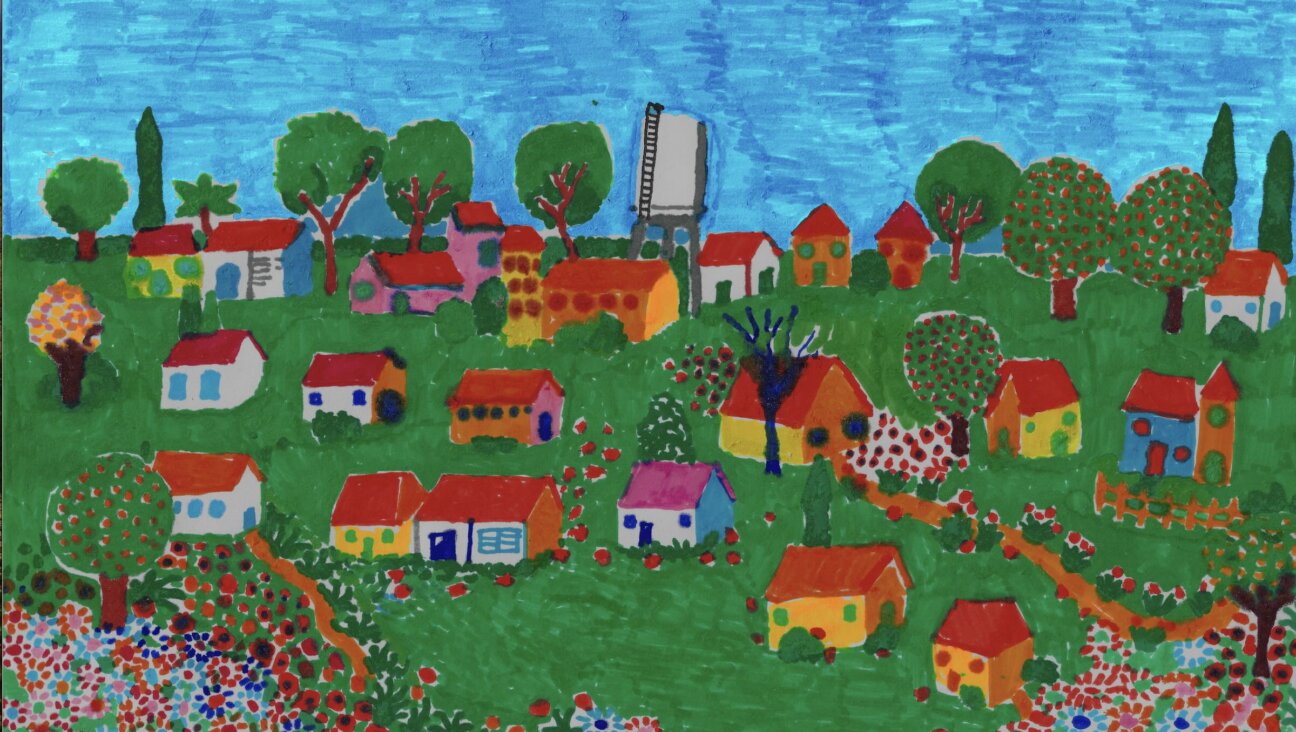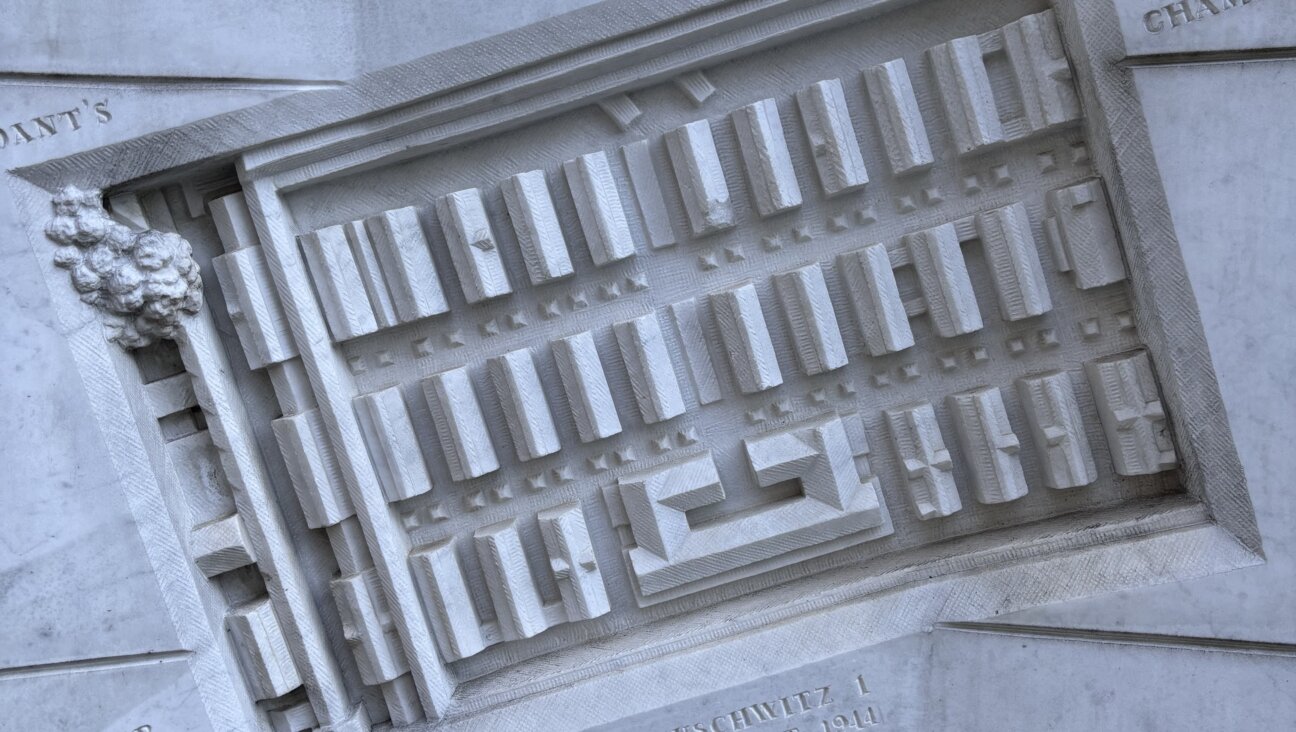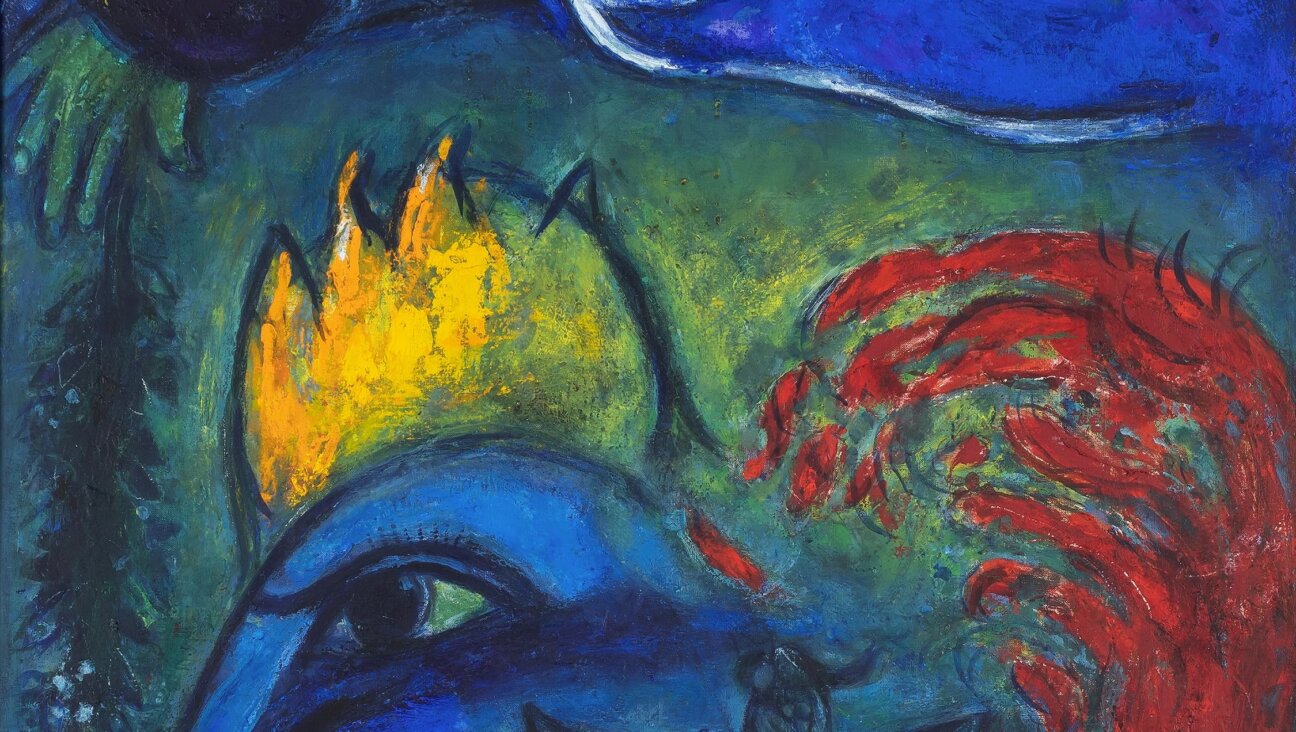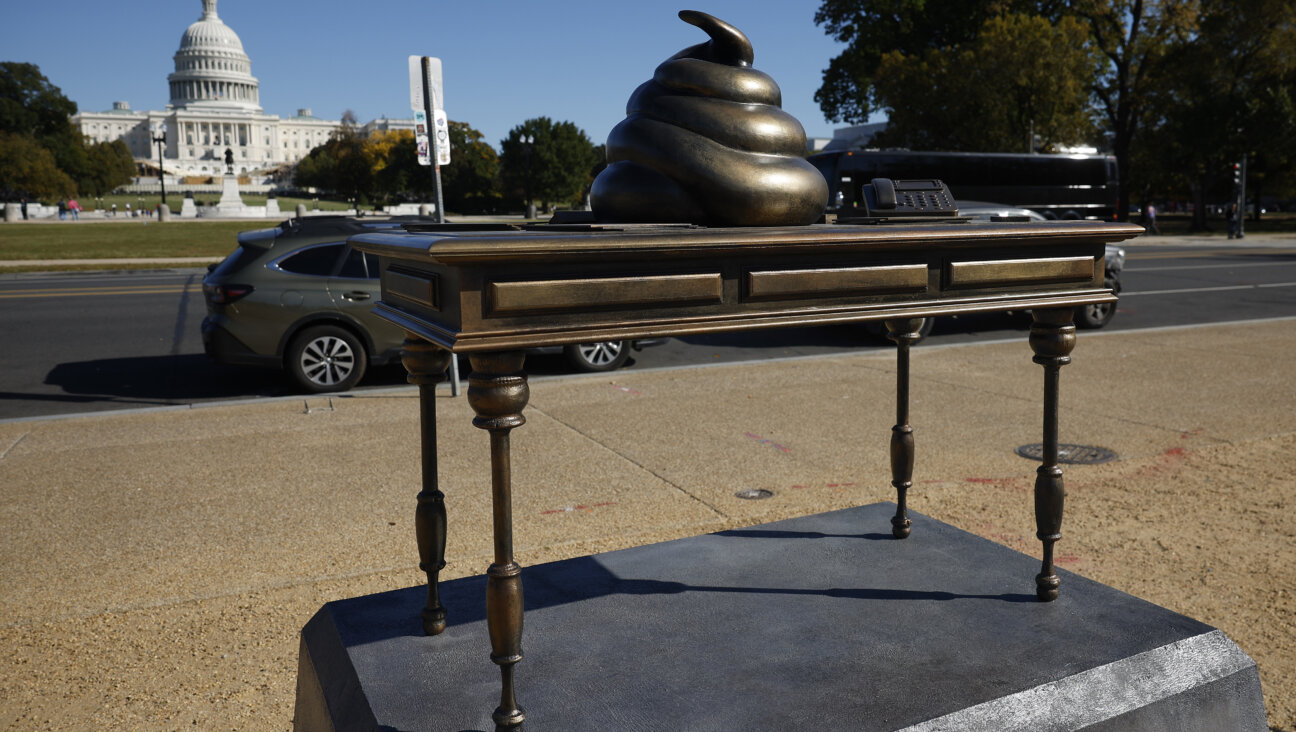American Jews Are Ready For Their Selfie

Signs of Our Times: ‘From Selfie to Groupie’ began as a daylong project for Alina and Jeff Bliumis, and has turned into a social project featuring nearly 2,000 photographs. Image by Alina and Jeff Bliumis
On a bright, sunny day in 2007, Alina and Jeff Bliumis stood on the Brighton Beach boardwalk, asking strangers to choose an identity.
Volunteers could pick from three options — “Jewish,” “American” and “Russian” — and then pose in front of the sign or signs bearing that designation. By the end of the day, 52 people had posed for 44 portraits.
Eight years on, what started as a daylong project has grown into a work of social art involving almost 1,900 people.
As Russian-born artists, the Bliumises first sought to document Russian Jewish identity in the context of immigration to Brighton Beach.
“Who are these people? What do they think of themselves? Instead of sitting in a studio and thinking about it, we decided to go and do a visual survey,” Alina said.
“There was an element of humor in this whole idea because when you go to Brighton Beach, almost everyone is Russian, Jewish and American,” Jeff added.
Born in Kishinev, Moldova, in 1958, Jeff immigrated to the United States in 1974. Alina, 43, hails from Minsk, Belarus, and moved to New York in 1994. Since 2000, they have worked together on artistic projects rooted in social engagement, be it compiling advice on how to fit in in America (“Cultural Tips For New Americans,” shown at Toomer Labzda gallery in New York in 2012) or trading paintings for a seat at a family dinner table (“A Painting For a Family Dinner,” which was shown at the Bat Yam Museum in Israel in 2009, and at The Bronx Museum of the Arts in 2012).
For a few years, that trip to Brighton Beach was filed and forgotten. The pictures were shown in small art shows, but the Bliumises considered the project finished. Until, one day, the National Museum of American Jewish History in Philadelphia asked to see some of their photographs. Looking back at the collection, the Bliumises decided to continue their experiment in a museum setting and expand the scope, asking: What does it mean to be Jewish American today?

Image by Alina and Jeff Bliumis
In 2012, they collaborated with the National Museum of American Jewish History, the Laurie M. Tisch Gallery, the Jewish Community Center of Manhattan, Limmud NY, the Jewish Funders Network International Conference, Limmud Bay Area, and the Jewish Community Center of the Greater Saint Paul Area to set up interactive stations in museums and community centers across the country. Rather than choosing from a set of fixed identities, participants were given a blank board and a marker, with instructions to write down a word or words that define them, and to take a selfie. Over the next two years, 1,870 people submitted their pictures for consideration, snapped against a blown up background of the Brighton Beach boardwalk.
“The Jewish tribe is very inclusive. It’s huge. So, we find people from all walks of life,” Jeff said.
The result is a new book, “From Selfie to Groupie,” which includes essays by David Shneer, director of the program in Jewish studies at the University of Colorado Boulder and Russian-American author (and the Forward’s deputy art director) Anya Ulinich, in addition to the photographs.
“Since many selves make a group, perhaps many selfies make a groupie,” the artists are quoted as saying in Shneer’s essay.
And what a group. The pictures range from toothy teenage selfies to family portraits, all serious reflections on Jewish identity in their own way.
In one shot, a woman stands in front of three boards marked “Rabbi” “Ilana” “Baird.”
The caption at the bottom reads: “I was raised in Chelyabinsk, in the Ural region of Russia, where the only synagogue was closed and turned into a warehouse in 1926. If someone had told me then that I would become a rabbi, I wouldn’t have believed it.”
In another, a man poses with the words: “Bar Mitzvah 1963,” “Still skeptical,” “Hope it’s for the best.”
An eldely man holds a sign that says: “Jewish American Prince.”
“It’s selfies, so people are not so self-conscious. People had fun with it, and danced around. It was really interesting,” Alina said.
The book, released earlier this month, was funded by the Genesis Philanthropy Group, which aims to “develop and enhance Jewish identity among Russian-speaking Jews.”

Image by Alina and Jeff Bliumis
“The Bliumises’ photo project poses a very important question: Given the freedoms and options America provides, how do people identify themselves?” Marina Yudborovsky, North American regional director for the Genesis Philanthropy Group, wrote in an email to the Forward. “So, these portraits represent a real case study, a sort of visual sociological research project, and at the same time present a creative art project.”
In fact, the book itself goes beyond the art project by including a breakdown and analysis of the identities represented in the photographs.
Thirty-three percent of participants chose “Jewish” as their main identity, while 26% chose to emphasize their names. Twenty-four percent were proud to be American citizens, 23% highlighted personality traits, and 17% cited their roots and origins. All in all, 13 main categories were represented.
Jewish identity resonated most strongly with adults: Forty-four percent chose it as their main focus, compared to only 26% of the children surveyed.
Seventy percent of those who wrote “Jewish and…” selected “American” as their corresponding identity. Only 51% of those who described themselves as “American and…” added “Jewish,” compared to the 63% who chose “roots and origins.”
In the end, the book highlights the diversity within the group more than any collective trait. And that’s okay, Jeff explained. What defines us as Jews is the question, not the answer.
“In Judaism, we had 12 tribes that went in 12 different directions, and went around the whole globe and acquired whole different cultural backgrounds that they brought with them as luggage when they migrated from place to place,” he said.
“The Jewish mind is inquisitive. It wants to know about itself. We ask that question more than anybody else, I think. How does the world see me? How do I want the world to perceive me? What is my identity, as a Jew or as a human being?”
Anne Cohen is the Forward’s deputy digital media editor.
A message from our Publisher & CEO Rachel Fishman Feddersen

I hope you appreciated this article. Before you go, I’d like to ask you to please support the Forward’s award-winning, nonprofit journalism during this critical time.
We’ve set a goal to raise $260,000 by December 31. That’s an ambitious goal, but one that will give us the resources we need to invest in the high quality news, opinion, analysis and cultural coverage that isn’t available anywhere else.
If you feel inspired to make an impact, now is the time to give something back. Join us as a member at your most generous level.
— Rachel Fishman Feddersen, Publisher and CEO

























